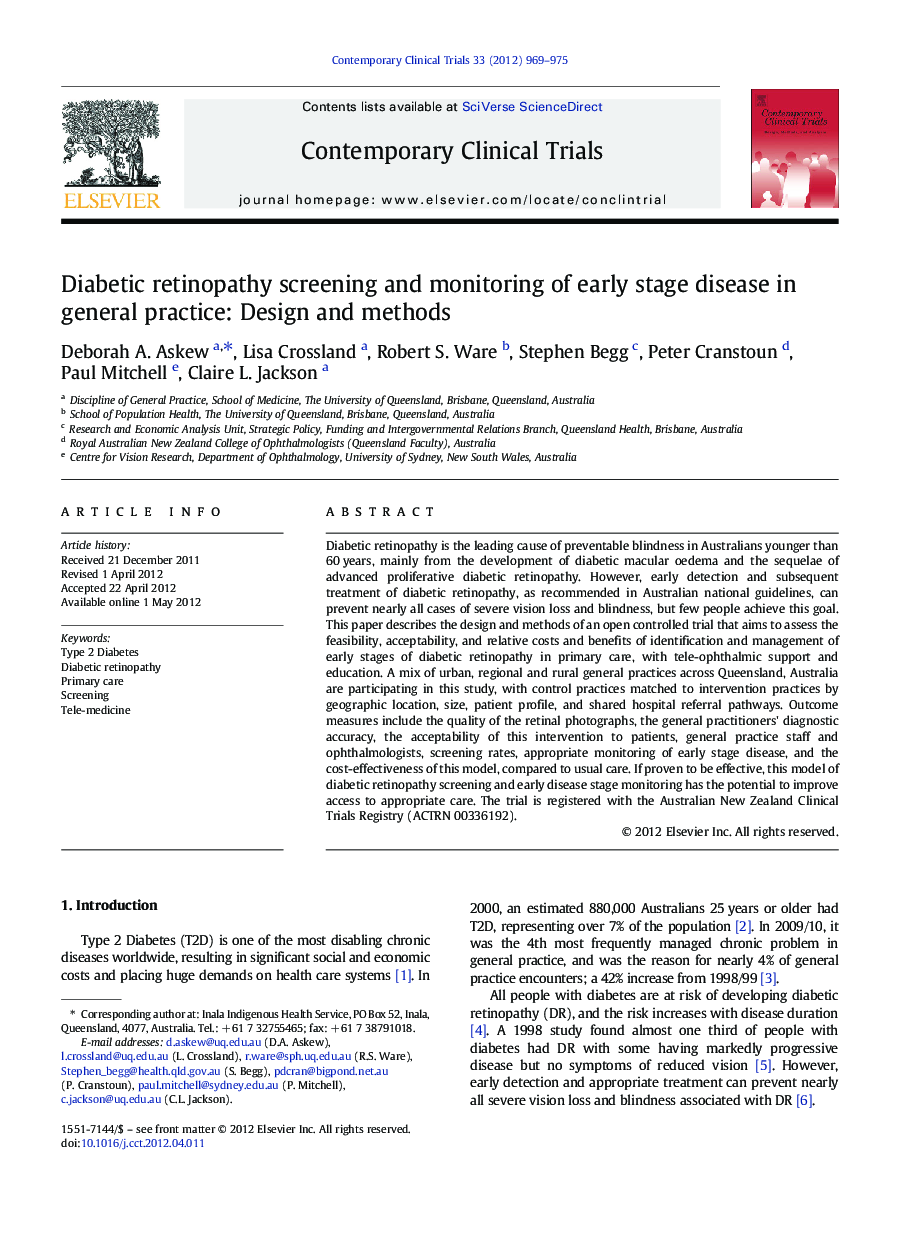| Article ID | Journal | Published Year | Pages | File Type |
|---|---|---|---|---|
| 6151367 | Contemporary Clinical Trials | 2012 | 7 Pages |
Abstract
Diabetic retinopathy is the leading cause of preventable blindness in Australians younger than 60Â years, mainly from the development of diabetic macular oedema and the sequelae of advanced proliferative diabetic retinopathy. However, early detection and subsequent treatment of diabetic retinopathy, as recommended in Australian national guidelines, can prevent nearly all cases of severe vision loss and blindness, but few people achieve this goal. This paper describes the design and methods of an open controlled trial that aims to assess the feasibility, acceptability, and relative costs and benefits of identification and management of early stages of diabetic retinopathy in primary care, with tele-ophthalmic support and education. A mix of urban, regional and rural general practices across Queensland, Australia are participating in this study, with control practices matched to intervention practices by geographic location, size, patient profile, and shared hospital referral pathways. Outcome measures include the quality of the retinal photographs, the general practitioners' diagnostic accuracy, the acceptability of this intervention to patients, general practice staff and ophthalmologists, screening rates, appropriate monitoring of early stage disease, and the cost-effectiveness of this model, compared to usual care. If proven to be effective, this model of diabetic retinopathy screening and early disease stage monitoring has the potential to improve access to appropriate care. The trial is registered with the Australian New Zealand Clinical Trials Registry (ACTRN 00336192).
Related Topics
Health Sciences
Medicine and Dentistry
Medicine and Dentistry (General)
Authors
Deborah A. Askew, Lisa Crossland, Robert S. Ware, Stephen Begg, Peter Cranstoun, Paul Mitchell, Claire L. Jackson,
